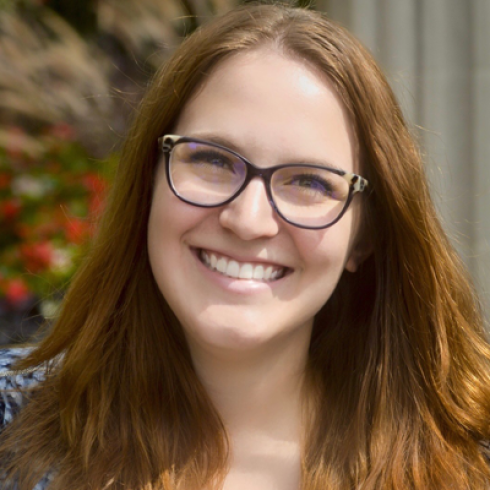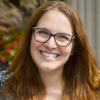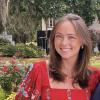Hello from Santiago!
First things first, I'M NOT REALLY SICK ANYMORE! I’ve been so sick for so long but now I am starting to feel human again! That’s probably the most important things. Anyway, here’s what I’ve been up to recently. Enjoy!
Recently, I had the chance to go to two places that are important to the history of Chile. With IES Abroad, we toured la Palacio de la Moneda and with my host sister, I went to El Museo de la Memoria y los Derechos Humanos (Museum of Memory and Human Rights).
Both of these experiences taught me more about a period in Chilean history that is very important to the country; however, it’s something that I haven’t learned about in my American schools. The golpe de Estado, or when the military dictatorship takeover occurred, is a critical point in Chilean history that I am glad I had the opportunity to learn more about it.
First, I went on a tour of La Moneda. La Moneda is essentially the White House, but the president of Chile does not live in La Moneda. President Bachelet and three of her Cabinet members have offices in La Moneda and La Moneda is where the president has the opportunity to have receptions, meet with foreign leaders, and conduct official business. La Moneda is surrounded by other government office buildings and some IES Abroad students in my program work extremely close to La Moneda because they work in the Ministry of Finance.
I was surprised when I entered La Moneda because all we had to do was bring our passports, walk through a metal detector, and then we were set. One palace guard followed us around but the amount of security didn’t seem too overwhelming like if you were walking around the White House, for example. (My only knowledge of what the White House looks like in the inside is from Scandal and West Wing, so if you’ve been to the White House and didn’t feel overwhelmed by the amount of Secret Service people, let me know.)
Anyway, from the outside, La Moneda looks like a large, solid rectangular building. However, once you walk in, you realize that that is definitely not the case. In the inside of La Moneda, there are four patios or courtyards and the offices and different rooms surround the courtyards. Interesting, right?
We walked in through the South Entrance to the Patio de los Naranjos, or Orange Patio. Yes, there are oranges in the Orange Patio. We really wanted some of the oranges but that was definitely against the rules and I didn’t want one of the guards with swords to come after us. Anyway, we then walked to the Patio de Cañones, or Cannon Patio, where yes, there are cannons. Their names are Relámpago and Furioso (Lightning and Furious) because everyone needs to name their cannons, right?
After, we went to the Capilla or Chapel in La Moneda. The Capilla is one of the original parts of La Moneda because after the golpe de Estado in 1973, a large part of the Moneda was destroyed. The Capilla is still used today and there are Catholic and Protestant masses for employees of the La Moneda during the week. It was very simple and very beautiful.
We then went to the sector where President Salvador Allende killed himself during the golpe de Estado and it was a very quiet and reflective time for me.
After, we walked through the Patio de Canelos (canelos are a type of plant) and you guessed it, there were canelos in the Patio de Canelos. This patio is close to the Ministry of the Interior’s office so that was interesting to see the door to the office. Finally, we ended with seeing a room that has a large table with coins for all the presidents of Chile. On the wall of this room, there are copies of the Acta de la Independencia de Chile (Chilean Declaration of Independence) because the originals were destroyed during the golpe de Estado.
Unfortunately, we weren’t able to see more of La Moneda because President Bachelet was there (and we didn’t see her either) but now I can say I went inside La Moneda!
On a different day, I also had the chance to visit El Museo de la Memoria y los Derechos Humanos. This museum serves as memorial for those who died, were tortured, and suffered during the dictatorship in Chile. There are exhibits with testimonials from victims, objects people made in the prison camps, more.
The most powerful part of the museum for me was the wall with the victims’ photographs. This wall is covered from the ceiling to almost the floor with the faces of people who didn’t survive the dictatorship. It a powerful reminder of the dictatorship and what is at stake when we don’t protect our human rights. If you are in Santiago, I would highly recommend going to this museum.
With a little less than a month or so left of my experience, I wanted to end with an update on the goals that I set when I was at the Atlanta airport waiting at the gate for my flight here. Honestly, that feels like a lifetime ago and it was only a month or so ago! Time flies when you work a lot, have class, sleep, are extremely sick, and go on short adventures around Santiago!
Anyway, let’s evaluate.
So, my first goal was to experience Santiago like Chileans do. I think I have been doing that because I’m working and experiencing Santiago in that way. I take public transportation (many thanks to the 513 or the 422 for getting me to work) and I have an almost full work day and then I take the bus home after class. It’s a long week and so I look forward to my days of descanso, or rest, that we get on the weekends. I also watch the Chilean news at night, eat once or Chilean dinner which isn’t dinner because it’s just delicious bread and tea. So, yeah, my experience isn’t probably 100% authentic but as of right now, close enough.
My second goal was to utilize my Chilean host family to show me around and teach me about Chilean culture. THIS ONE IS 10,000% completed. I love my Chilean host family and will dedicate a post to their amazingness soon. I am definitely learning a lot about Chile from them and it’s been amazing living with them. My host sister already told me she is sad about me leaving. I’m already sad too. They’ve become a part of my real family and it’s going to be devastating when I leave. I don’t want to think about that right now.
My third goal was to try new things, especially food. Well, I think traveling 5,000+ miles away from home is definitely trying something new. Regardless, I have definitely been trying new things and having little adventures along the way. One day, we didn’t have class in the evening so I went to a comic book store I wanted to go to in order to see if anything caught my eye and a pet boutique near my apartment I wanted to go to as well to see if there was anything for my dog. Again, like I mentioned in my last post, it’s the little things. Also, I have definitely been trying new foods. I thought I was a picky eater but now, I just eat whatever is put in front of me. Minus beets. I hate beets. And cooked onions. I don’t like those either. Anyway, I’ve been doing good trying new food.
Finally, my last goal is to feel more comfortable speaking Spanish. I’m not sure if comfortable is how I feel now but I definitely am using more Spanish than I’ve ever used in my life. I feel like my comprehension has definitely improved and now that I’m more familiar with Chilean Spanish, I feel better and less frazzled. I definitely still struggle with being too wrapped up with trying to have perfect grammar and strong word choice when I’m speaking and I still get flustered when I want to say something or have a conversation but I definitely see an improvement.
Well, as we start the second half of this voyage, I am looking forward to more adventures and more things to write!
Thanks for reading!

Molly Cunningham
<p>My name is Molly and I am studying and working in Santiago. I'm a Journalism and Spanish majors from Brookfield, Illinois. Follow along during my experience in Santiago and hopefully you'll learn something!</p>





